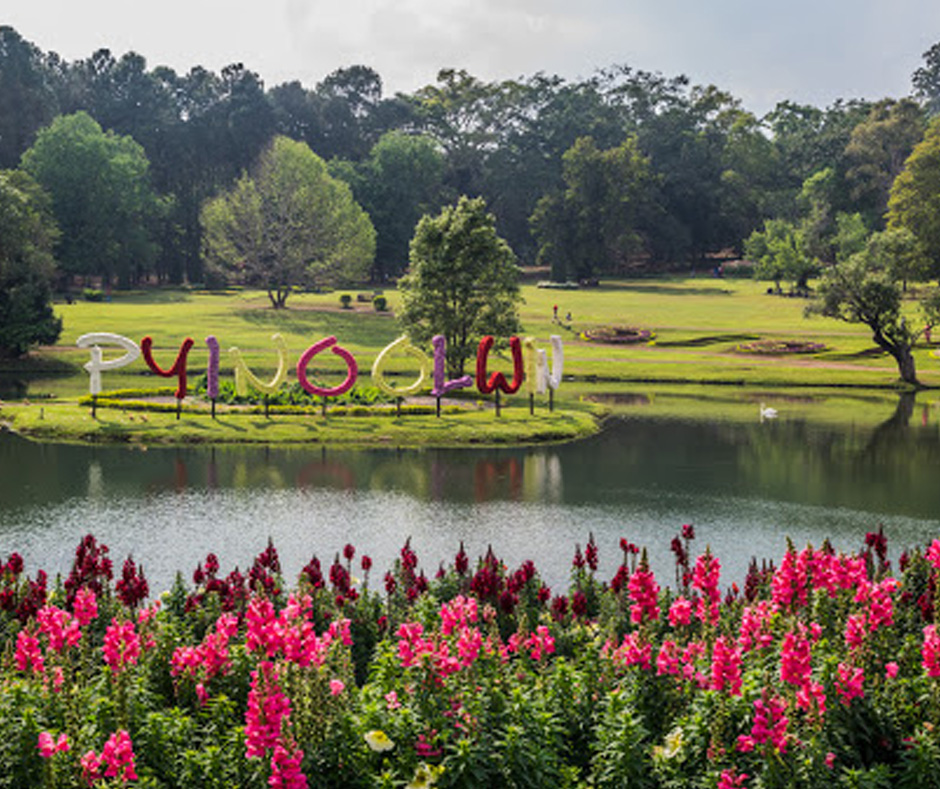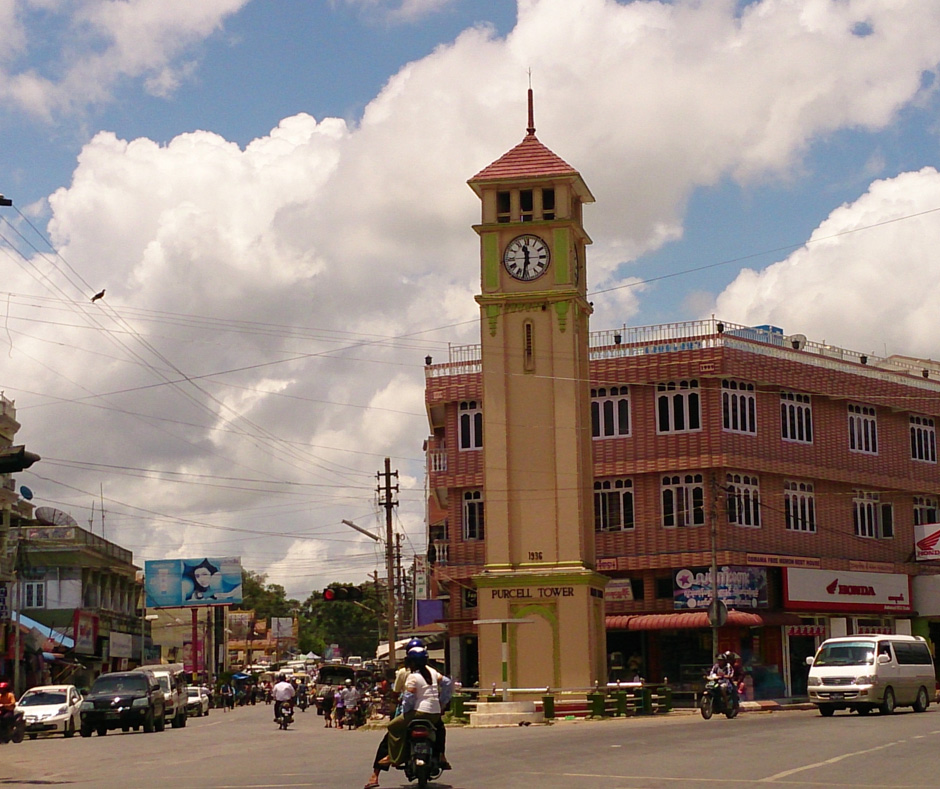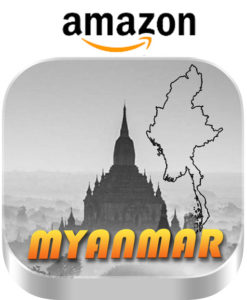Pyin Oo Lwin
 Pyin Oo Lwin or Pyin U Lwin (Burmese: ပြင်ဦးလွင်; MLCTS: prang u: lwang mrui., pronounced [pjɪ̀ɰ̃ ʔú lwɪ̀ɰ̃]; Shan: ဝဵင်းပၢင်ႇဢူး ), formerly and colloquially referred to as Maymyo (Burmese: မေမြို့; MLCTS: me mrui.), is a scenic hill town in Mandalay Region, Myanmar, some 67 kilometers (42 mi) east of Mandalay, and at an elevation of 1,070 meters (3510 ft). The town was estimated to have a population of around 255,000 in 2014.
Pyin Oo Lwin or Pyin U Lwin (Burmese: ပြင်ဦးလွင်; MLCTS: prang u: lwang mrui., pronounced [pjɪ̀ɰ̃ ʔú lwɪ̀ɰ̃]; Shan: ဝဵင်းပၢင်ႇဢူး ), formerly and colloquially referred to as Maymyo (Burmese: မေမြို့; MLCTS: me mrui.), is a scenic hill town in Mandalay Region, Myanmar, some 67 kilometers (42 mi) east of Mandalay, and at an elevation of 1,070 meters (3510 ft). The town was estimated to have a population of around 255,000 in 2014.The town began as a military outpost established near a small Shan village with two dozen households on the Lashio-Mandalay trail between Nawnghkio and Mandalay. In 1897, a permanent military post was established in the town and later, because of its climate, it became a hill station and the summer capital of British Burma. The establishment in Burma (civil, commercial and military) would move to Maymyo during the hot season to escape from the high heat and humidity of Rangoon. During British rule and through the 1970s, Maymyo had a large Anglo-Burmese population, but this steadily declined. During the Japanese occupation, as many Anglos were concentrated in and around Maymyo, the Japanese incarcerated many of them for fear of their loyalty to the British very close to Maymyo. Today, Maymyo still has one of the larger populations of Anglo-Burmese in the country. The British named the location Maymyo, literally ‘May’s Town’ in Burmese, after Colonel May, a veteran of the Indian Rebellion of 1857 and commander of the Bengal Regiment temporarily stationed in the town in 1887. The military government of Burma renamed the town Pyin U Lwin.
The area is also the site of the decisive battle of Maymyo where the Burmese royal army under Maha Thiha Thura defeated the Chinese Army in the third invasion during the Sino-Burmese War of 1765–1769.
 Nowadays it is filled with more recent building developments, however it still has a wonderful charm about it and is very easy to explore and discover some of the magnificent waterfalls that can be found in the surrounding area. The botanical gardens in the town are stunning and are a unique addition to Myanmar. They were opened in 1915 are still beautifully maintained with various dedicated flower shows being held there throughout the year. There is a $5 entry fee, but it is well worth it from the beautiful aromas and views that you experience. There are also several beautiful 19th century houses that have now been converted into Hotels which you can stay the most famous being; The Candacraig. This mansion was built in 1904 and can be accessed by the old style but still authentic, horse and cart that is still the main form of transport around the town to the present day. The Pwe Gauk Falls are just east of Pyin oo Lwin and consist of a series of six small waterfalls and are a popular place to go for the locals and some tourists especially when the heat gets too much. They are a magnificent place to relax and some simple restaurants can also be found in there are where refreshments are available. The best waterfall is probably the Dat taw Gyaint waterfall to the west of the town. The lowest part of the waterfall splashes intensely into the crystal-clear waters beneath it in which you can swim in. Overall, the waterfalls are a great day out to get a different experience of Myanmar.
Nowadays it is filled with more recent building developments, however it still has a wonderful charm about it and is very easy to explore and discover some of the magnificent waterfalls that can be found in the surrounding area. The botanical gardens in the town are stunning and are a unique addition to Myanmar. They were opened in 1915 are still beautifully maintained with various dedicated flower shows being held there throughout the year. There is a $5 entry fee, but it is well worth it from the beautiful aromas and views that you experience. There are also several beautiful 19th century houses that have now been converted into Hotels which you can stay the most famous being; The Candacraig. This mansion was built in 1904 and can be accessed by the old style but still authentic, horse and cart that is still the main form of transport around the town to the present day. The Pwe Gauk Falls are just east of Pyin oo Lwin and consist of a series of six small waterfalls and are a popular place to go for the locals and some tourists especially when the heat gets too much. They are a magnificent place to relax and some simple restaurants can also be found in there are where refreshments are available. The best waterfall is probably the Dat taw Gyaint waterfall to the west of the town. The lowest part of the waterfall splashes intensely into the crystal-clear waters beneath it in which you can swim in. Overall, the waterfalls are a great day out to get a different experience of Myanmar.








